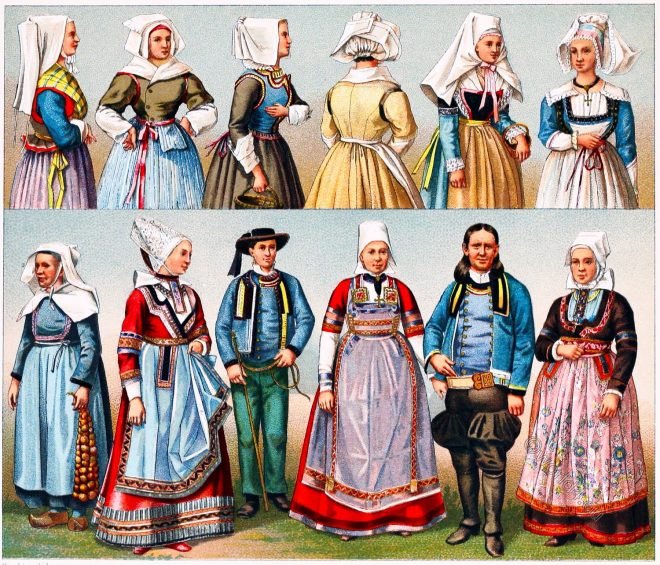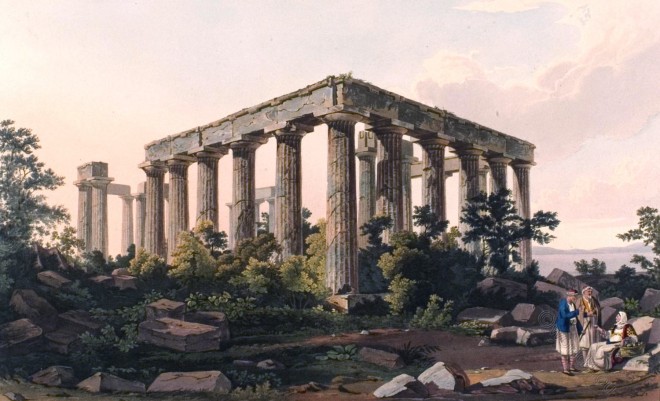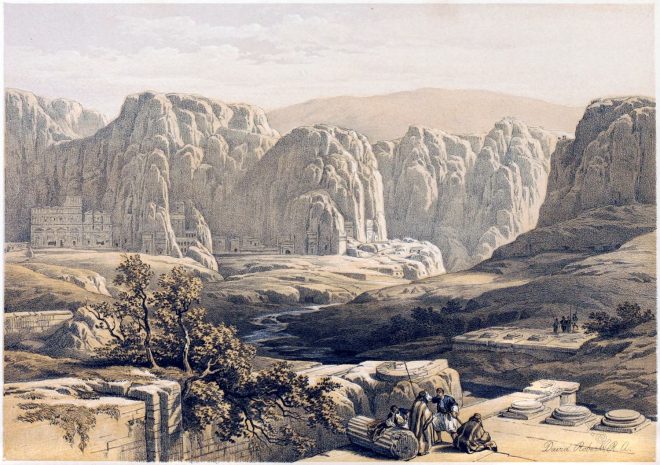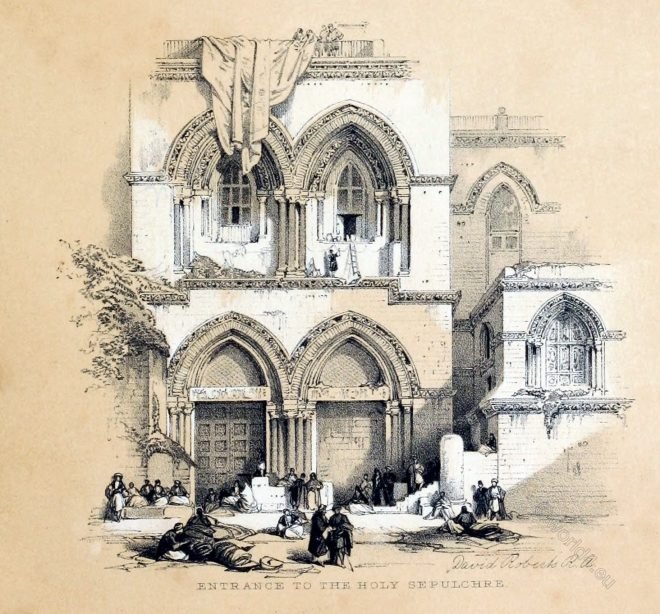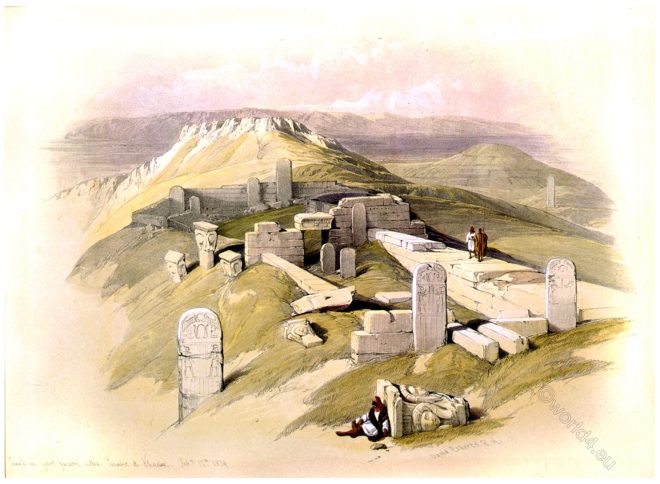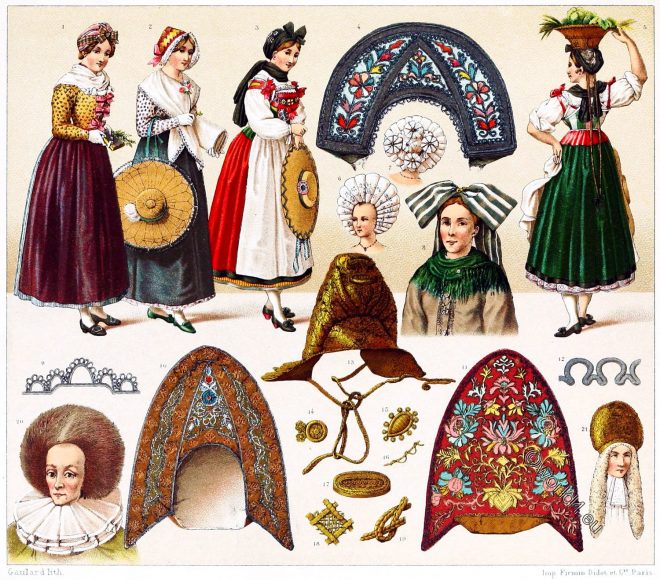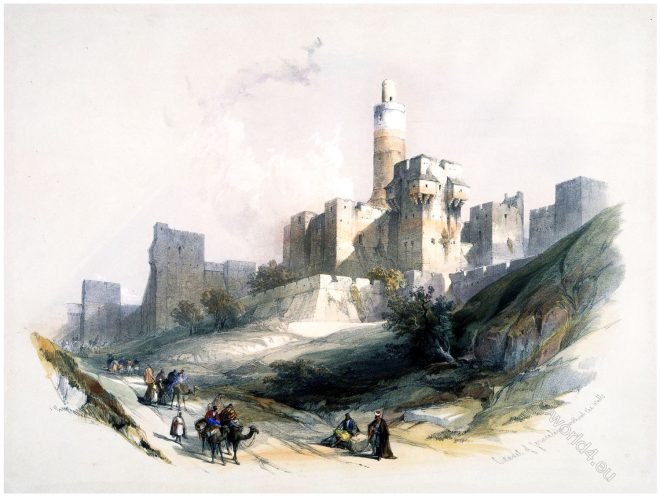French national costumes of Brittany. Département Finistère in the 19th century. Peasant and bourgeois costumes.
Category: 19th Century
The Temple of Jupiter Panhellenios in the island of Aegina.
Aegina, Greece: Temple of Aphaea. It is probably one of the most ancient temples in Greece.
The Gonfanon, or Amorial Ensigns of Jerusalem.
Exhibited in the vignette, were appointed by the chiefs of the first Crusade, after the capture of the city on July 15th, 1099, to be borne by the Christian king then elected.
General representation of the Site of Petra, Jordan.
This Engraving gives a general representation of the area which opens to the spectator on emerging from the “Chasm” by which he enters on the East.
The Entrance to the Church of the Holy Sepulchre at Jerusalem.
This Vignette represents the facade of the Church of the Holy Sepulchre, which is built over the spot where our Lord was presumed to have been buried.
An Ancient Egyptian Temple, on Gebel Garabe. Sinai, Egypt.
A view of the ancient Egyptian Temple of Hathor at Gebel Garabe, usually known as Serabit el-Khadim, in the Sinai, Egypt.
Mount Hor, from the cliffs encircling the ancient city of Petra.
The view was magnificent, commanding El Ghor and the Wady Arabah, while above him towered the naked majesty of Mount Hor.
Costumes of Alsace. Hairdresses and headgear of the different estates.
Female national costumes of Alsace. Hairdresses and headgear of the different estates. The bendel in different shapes. The fur cap.
Late Victorian era. Aristocrats afternoon wardrobe.
This man and woman on their way to church are dressed in a manner becoming the late Victorian aristocrats on a semiformal afternoon occasion.
The Citadel of Jerusalem and the Tower of David.
The citadel of Jerusalem, with the Tower of David, lies on the north-western part of Sion, to the south of the Jaffa Gate.

